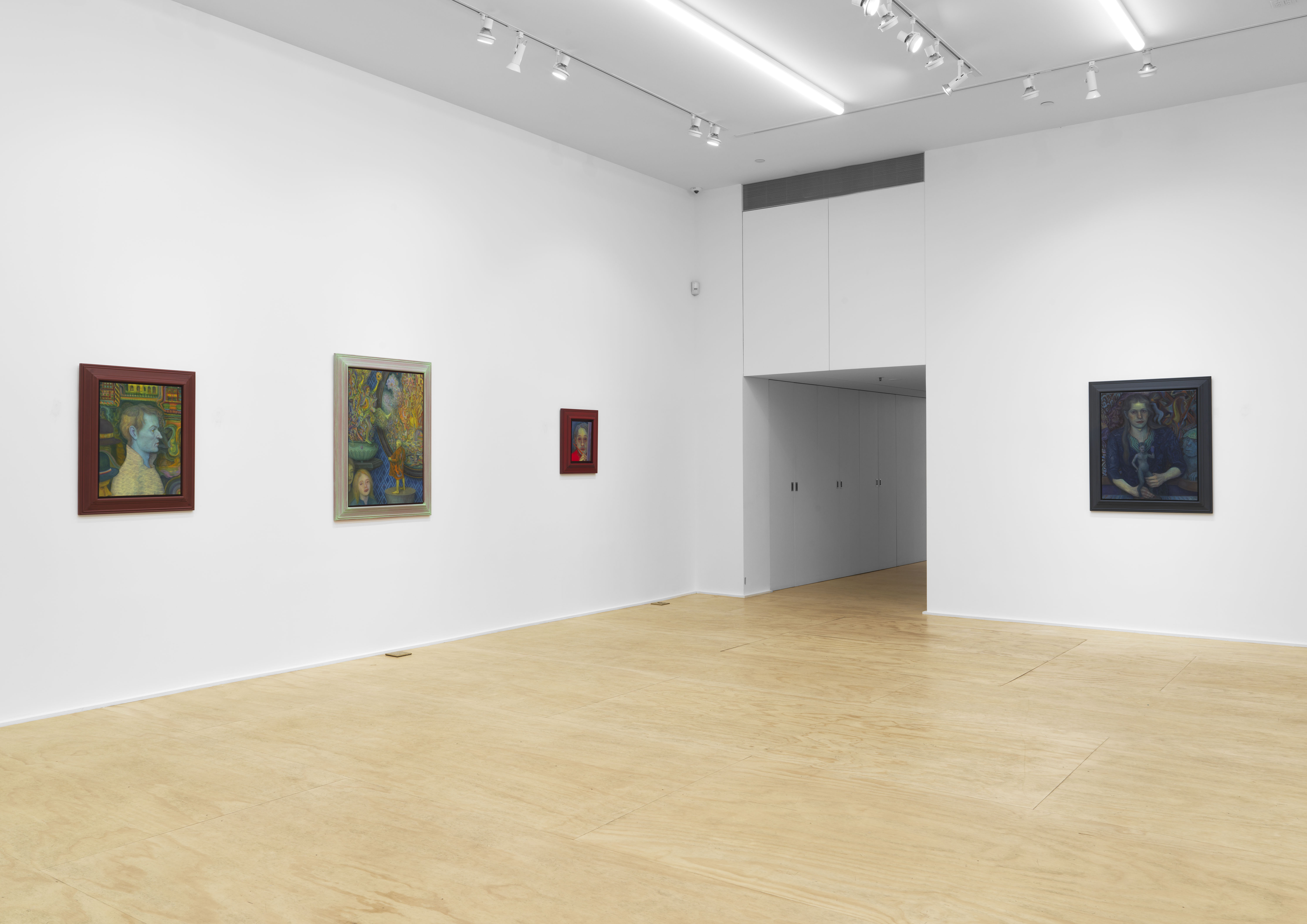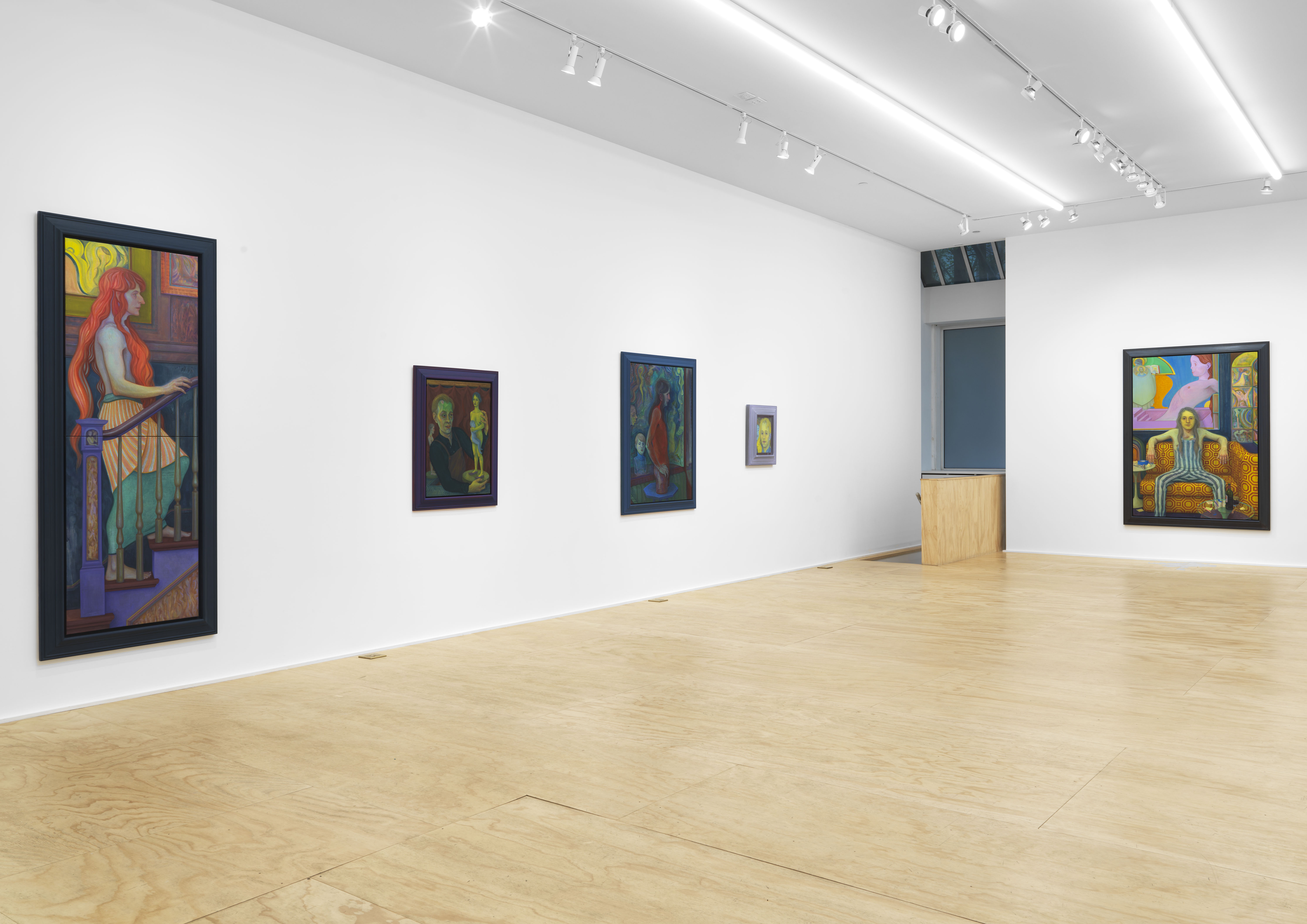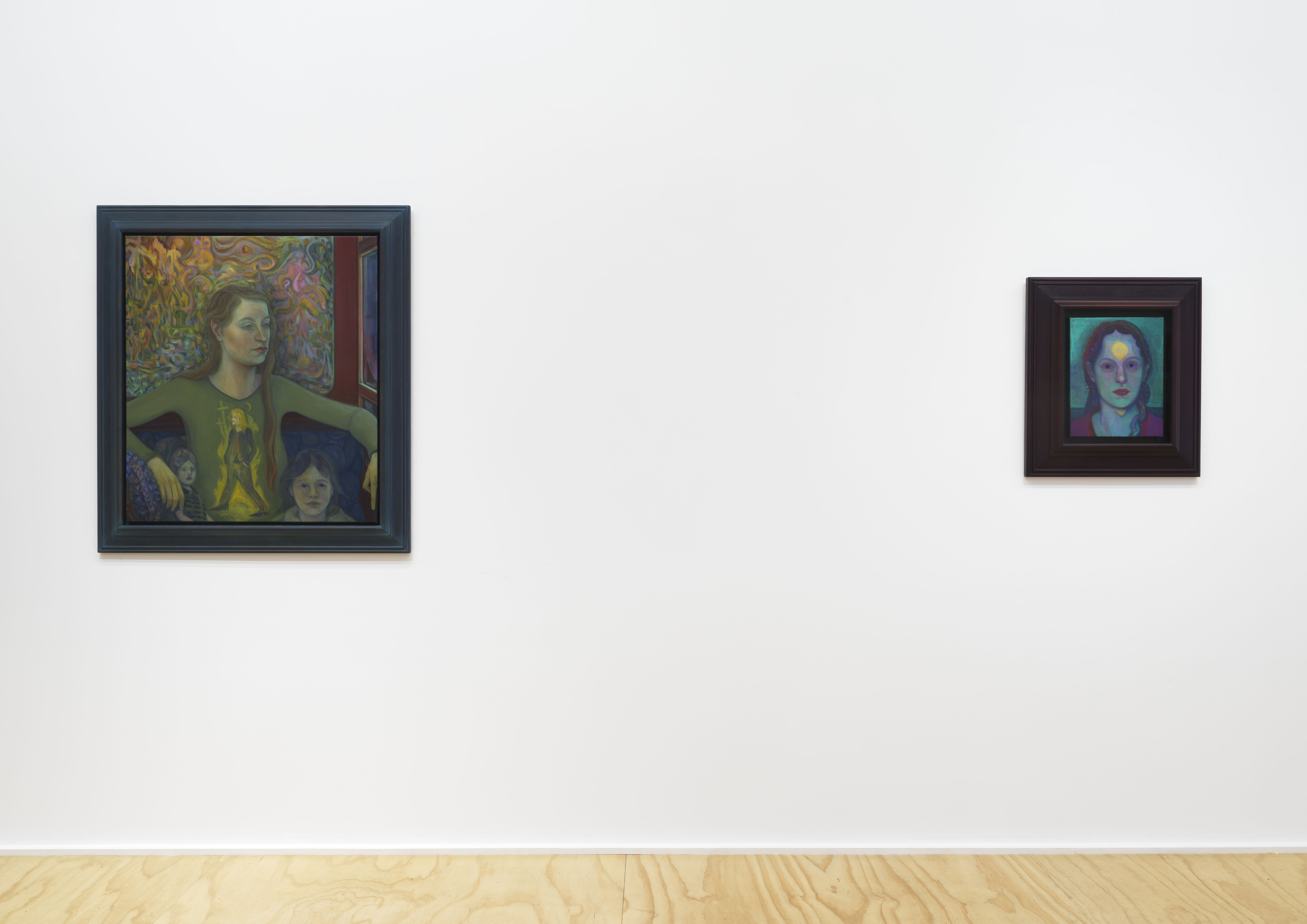Steven Shearer: The Late Follower
Eva Presenhuber, New York September 14th, 2018
The Brant Foundation Loan Program:
Steven Shearer: The Late Follower
September 14, 2018 – October 21, 2018
Vulgarian Applique, 2016, oil pastel, oil on linen; artist’s frame, Framed: 24 x 21 x 2 inches
Stairs, 2016, ink, oil, oil pastel on canvas in artist frame, Frame: 89 1/4 x 37 1/4 x 2 inches
Sculptor and satyr, 2016, oil on canvas in artist frame, Frame: 39 1/4 x 33 1/4 x 1 1/2 inches
PRESS RELEASE: Eva Presenhuber is pleased to announce the fifth exhibition with Canadian artist Steven Shearer.
For more than 20 years, Shearer has worked with a wide range of materials such as print, sculpture, painting, drawing and collaged found photography. Shearer has become increasingly well known for his adept portraits of figures painted within interior spaces. These portraits recall figures from past music subcultures and art historical painting, and are rendered employing stylistic references from Fauvism and Symbolism to German Romantic Art. Reconfiguring Renaissance systems of perspective, he creates complex perspectival elements within the compositions that animate the viewer’s engagement with his paintings.
This exhibition presents paintings and drawings, most of which depict archetypes of artists in studios with their muses. The subjects in the paintings are more similar to effigies than portrayals of actual people. In many cases, the psychology of the subject appears to be reflected onto their interior surroundings, comparable to a Symbolist approach.
Atheist’s Commission (2018) depicts an artist who faces the viewer directly in a confrontational and open manner, with arms outspread, and whose body and striped pants relax into the couch. Above the patterned couch is his commissioned work: a version of a religious painting that shows the head and torso of a body reclining across the canvas. It is delicately rendered with luminous thin veins underneath the pale pink skin. The flesh is remotely sexualized but also bloated and corpse-like. It is as if the artist in the painting is responding to the hypocrisy of historical religious painting that, with its abundant rendering of dead flesh in ecstasy, registers the spirit of the body in the physical world that ends with death and decay. With ornate gold embellishment surrounding the soaring body, the painting is actualized as an atheistic and irreverent religious painting.
In another painting, Uncle Hermann (2018), an artist holds a small sculpture of a woman cradling a child. With a makeshift curtain in the background, an old apron, and the caricatured physicality by which the artist is holding the sculpture, the painting appears to show a B-side version of the classical trope of the artist in the studio. In actuality the sculpture and the color-blocking of green, yellow, and pink in the figure’s face, bear resemblance to the artwork by mid-century Swiss artist Hermann Scherer, a lesser known colleague of Ernst Ludwig Kirchner. The near verisimilitude of Shearer and Scherer is not happenstance. At times, Shearer employs subtle echoes from art history to situate his own artistic subjectivity. The painting’s scene condenses an artist’s time spent working in the studio potentially over months, yet we also imagine it as a story of an artist playing roulette with posterity.
The Late Follower (2017) is also evocative of a past era and setting. The painting is a portrait of a truncated body. It is a torso of a statue on a sculptor’s trestle rendered with such attention to human expression that the statue is inevitably personified. Muscular and resolutely un-hollowed out, the body/statue has blue cat-like eyes and wears fish-scale chainmail. It recalls Shearer’s vivisection drawings that studied the body in decay, combining figures from underground music with fantasies of self-inflicted violence. Framing this statue are unfinished canvases, furniture, and a ghost-like figure that appears to hold up a brush to a painting partially hidden behind a stack of other canvases. Each of these elements contributes to a trompe-l’oeil effect. The statue is a painting within a painting no matter how real or unreal he may appear.
Shearer’s paintings are embedded in art history to such an extent that one might assume each has a certain antecedent, but this is not necessarily the case. The likeness that is aspired to is not based on an actual person but is triggered by an aggregation of faces from the past and present. Shearer creates his own universe of archetypes, in which the characters seem to be related across paintings. But rather than being part of a family-genealogy, their relation is a different one. It seems as if they created one another, as if the small figures in The Chiseller’s Figurines (2018) are from another painting that have come to life, or as if the painter from Working from Life (2018) was working on other paintings in the show. The distortions and mirroring that result from the oeuvre as a whole suggest a character study of shifting sensibilities.
Contact Allison Brant for more information about The Brant Foundation’s loan program.


